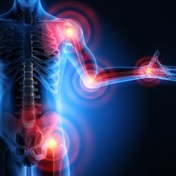
Definition
Vasculitis may affect blood vessels of any type, size or location, and therefore can cause dysfunction in any organ system, including the central and peripheral nervous system. The symptoms of vasculitis depend on which blood vessels are involved and which organs in the body are affected.
The disorder may occur alone or with other disorders such as temporal arteritis. Temporal arteritis (also called cranial or giant cell arteritis) is an inflammation of the temporal artery (which runs over the temple, beside the eye).
The condition is characterised by vague ill health and constitutional symptoms, associated with organ dysfunction due to blockage of blood vessels. The diagnosis is extremely difficult and is often missed early on. The type of vasculitis is classified by the size of the blood vessel involved.
Small vessel involvement includes Henoch Shonlein Purpura, which causes skin rash especially on the legs or weight-bearing, gravity-dependent areas.
Medium vessel involvement includes Polyarteritis Nodosa, Churg Strauss syndrome and Wegeners granulomatosis. These involve organs such as skin, causing ulcers; kidneys, causing kidney failure; lungs, causing breathlessness and the coughing of blood. Abdominal vessel involvement causes abdominal pain and gangrene of areas of the bowel.
Large vessel disease includes Takayasu arteritis and temporal or giant cell arteritis, which cause inflammation of the aorta and can produce a stroke.
Symptoms
Polyarteritis Nodosa causes several syndromes. Usually there is low grade fever of uncertain cause, as well as joint pain, weight loss, skin ulcers, numbness or weakness of hands or feet due to neuropathy, and abdominal pains. Kidney involvement may progress from blood in the urine to kidney failure.
Churg-Strauss Syndrome, is similar to polyarteritis nodosa, but has a high incidence of allergic manifestations and asthma.
Wegeners granulomatosis, produces involvement of sinuses and the upper respiratory tract, as well as lung and kidney involvement. A type of antibody known as ANCA is measurable in a large percentage of patients and can reflect disease severity.
Takayasu arteritiscauses fevers, headaches, dizziness, blurred vision, stroke and blockage of large blood vessels to the limbs.
Temporal Arteritis/Giant Cell Arteritismay include symptoms of stiffness, muscle pain, fever, severe headaches, pain when chewing and tenderness in the temple area. Other symptoms may include fatigue, weight loss, shaking, sudden vision loss and sweats. The prognosis for individuals with temporal arteritis is generally good. With treatment, most individuals achieve complete remission, however vision loss may be irreversible. If diagnosis is delayed visual loss might already have occurred causing permanent blindness.
Prognosis
The diagnosis requires recognition of vascular involvement, categorisation of organ involvement, and measurement of antibodies in the blood. Assessment of organ involvement includes angiograms of blood vessels, chest X-ray and measurement of kidney and liver function. Biopsies of tissue are often necessary to confirm the inflammation of blood vessels.
The prognosis for individuals with vasculitis varies, depending on the severity of the disorder. Mild cases of vasculitis are generally not life-threatening, while severe cases involving major organ systems may be permanently disabling or fatal. The diseases of medium and large vessel disease demand aggressive therapy.
Treatment
Treatment for vasculitis depends on the severity of the disorder and the individual's general health. Treatment may include cortisone or cytotoxic drugs – especially cyclophosphamide. Other treatments may include plasmapheresis (the removal and reinfusion of blood plasma), intravenous gammaglobulin and cyclosporin. Some cases of vasculitis may not require treatment.
Treatment for temporal arteritis and its associated symptoms generally includes high doses of corticosteroid therapy alone. Early detection of temporal arteritis and immediate treatment are essential to prevent vision loss.
Treatment of Wegeners granulomatosis and polyarteritis nodosa requires addition of cyclophosphamide to high doses of corticosteroid. The aggressive treatment has altered the prognosis from almost certain death, to survival in the majority.




 Publications
Publications
 Partners
Partners















